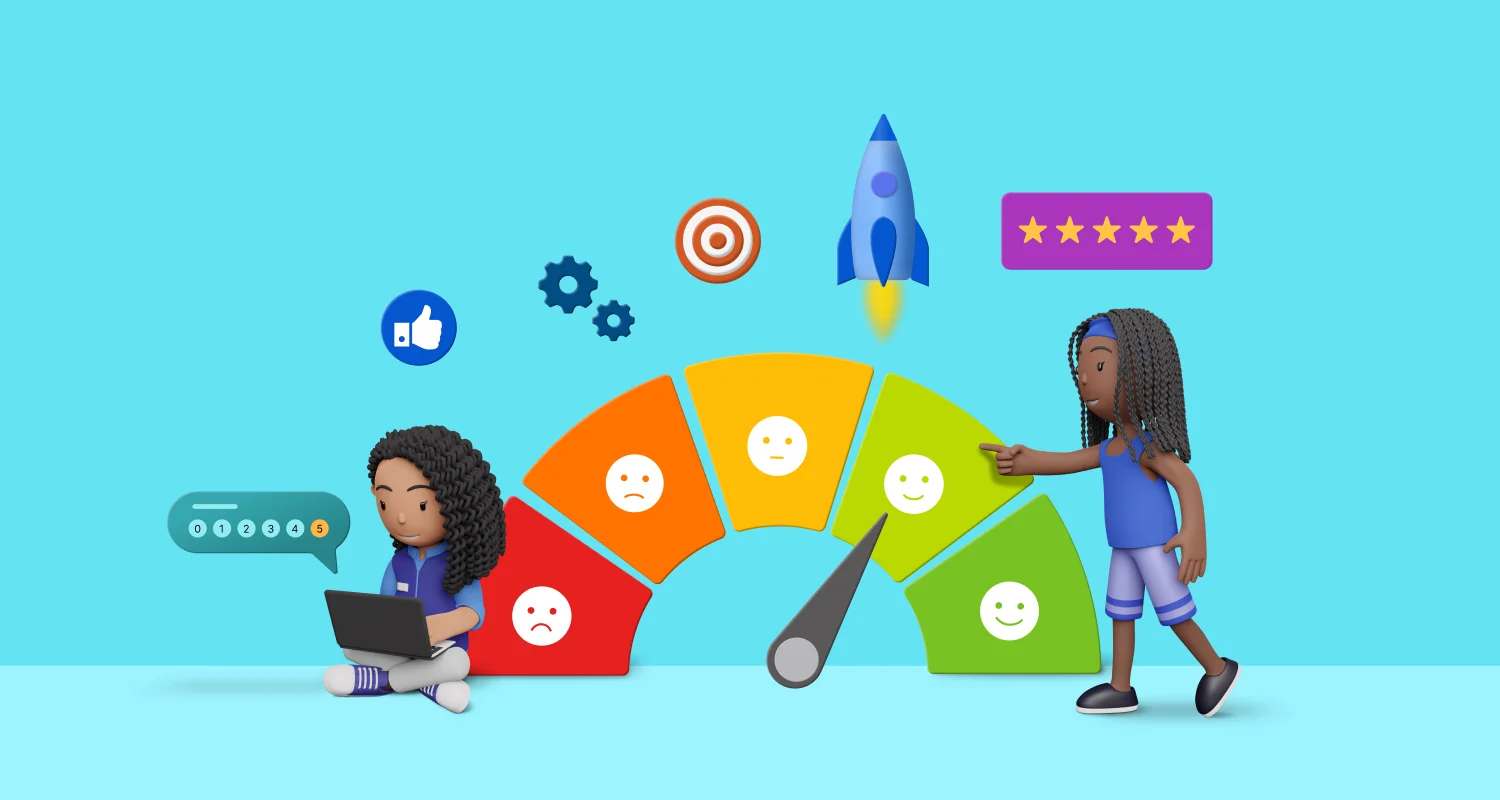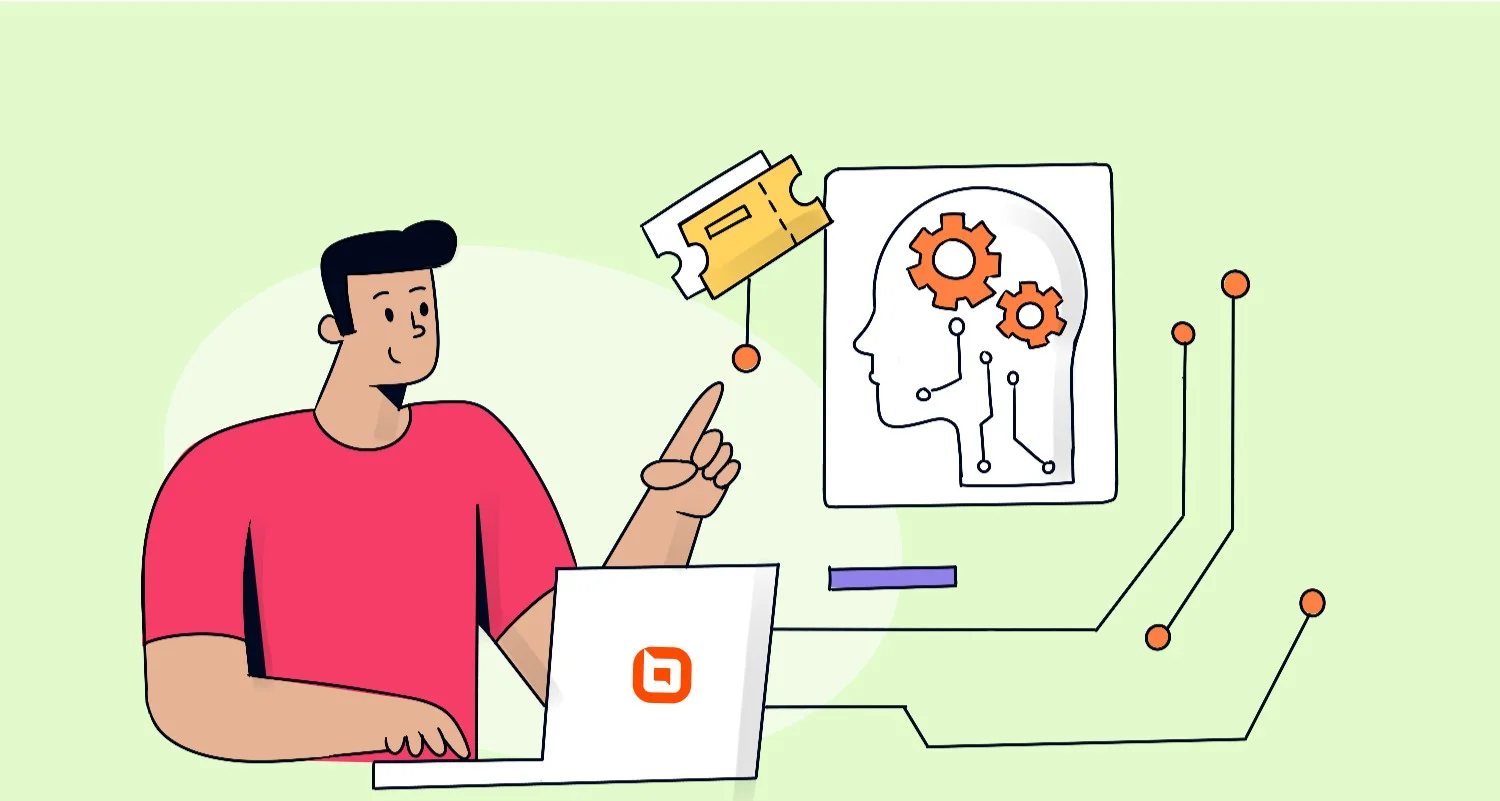Although hard to come by, loyal customers are a tremendous asset to any brand. Many businesses now consider keeping customers happy to be a top priority and for good reason.
Returning customers generate the most value by gushing their friends and coworkers about their most recent purchases!
In this post, we will examine what customer loyalty is, ways to improve it, and some metrics to gauge client loyalty.
Why should your business measure customer loyalty?
Just because a customer is satisfied with your support doesn’t guarantee that they will be loyal to your company. Measuring customer loyalty benefits companies in many ways, such as:
- Knowing customers better: Customer loyalty metrics provide insight into what drives customers to stay loyal to the brand. Understanding customer behavior and purchasing patterns makes it easy to offer exactly what customers need to keep them returning for more.
- Tracking business performance: Observing changes in customer loyalty metrics helps companies evaluate their performance against past trends. They can use this to identify their strengths or weaknesses and devise strategic plans to improve customer loyalty.
- Strengthening customer relationships: Knowing how customers relate to the company and perceive it helps departments throughout the company improve customer connections.
- Creating and maintaining a superb customer experience: Businesses can use customer loyalty metrics to identify which experiences retain customers and which ones push them away. This helps companies adapt their procedures and workflows to deliver an outstanding customer experience across all customer touchpoints.
- Making sound decisions: The insights from loyalty metrics inform businesses’ future decisions to maintain customers.
Brand loyalty vs Customer loyalty
There are two kinds of loyalty that are crucial for the success of any business. One is customer loyalty, and the other is brand loyalty.
Brand loyalty refers to how clients view your company, or their feelings about a brand that makes them prefer one company over another. It happens when clients form a lasting relationship with a particular brand.
Customer loyalty on the other hand refers to the connection that clients have with a business that shows how likely they are to continue doing business with a company.
It happens when customers receive consistent positive experiences, leading them to return to a business over and over again.
Below are some key differences:
| Brand loyalty | Customer loyalty |
| Based on emotional attachment to the brand’s identity. | Based on satisfaction with the customer experience. |
| Focuses on the brand’s image, values, and reputation. | Focuses on the customer’s journey and service quality. |
| Harder to achieve but tends to be long-lasting. | Easier to achieve but requires consistent effort to maintain. |
| Customers overlook price differences or minor inconveniences. | Customers may switch to competitors if service declines. |
How to measure customer loyalty
Customer loyalty is the ongoing commitment and preference of a customer towards a particular brand, product, or service. It is the result of a positive customer experience, satisfaction, and the perceived value of an offering.
With customer loyalty index, we can monitor our success at keeping the customers we attract. Let’s discuss the key metrics to measure your customers’ loyalty.

1. Customer satisfaction score (CSAT)
The customer satisfaction score serves as an efficient and straightforward method to gauge immediate customer satisfaction. It prompts customers to evaluate their satisfaction with a company’s product or service on a scale, typically ranging from 1-5 or 1-7.
To improve your CSAT score, learn more about the best practices for customer satisfaction surveys.
To calculate your customer satisfaction score:
- Divide the total number of satisfied customers by the total number of respondents and multiply the results by 100.

This direct response can assist businesses in pinpointing problems and implementing improvements to boost customer loyalty.
2. Customer retention rate
Your customer retention rate reflects how well your brand can keep clients. It displays the number of clients who have continued using your brand over time.
According to statistics, 82% of organizations agree that customer retention is cheaper than client acquisition because of improved brand image.
Several things impact your customer retention strategies, like perceived value versus cost, delivery time, and loyalty programs.
Customer retention rate (CRR) calculation is as follows:
- Subtract the number of new clients (CA) during your chosen time period from the number of clients at the end of that time (CE).
- Divide the result by number of clients you had at the beginning of that time period (CS).
- Multiply the result by one hundred.

Where:
CA: Total number of new clients.
CE: Total number of clients at the end of the given time.
CS: Total number of clients at the start of the given time.
3. Customer lifetime value
The complete financial connection between a brand and its customers is examined through customer lifetime value (CLV).
Research by Gartner shows that 25% of marketers rank CLV as one of their top 5 marketing metrics.
This metric aims to estimate the potential profit each client may provide for the company. Companies can use the CLV calculation to determine how much they can spend to gain each client.
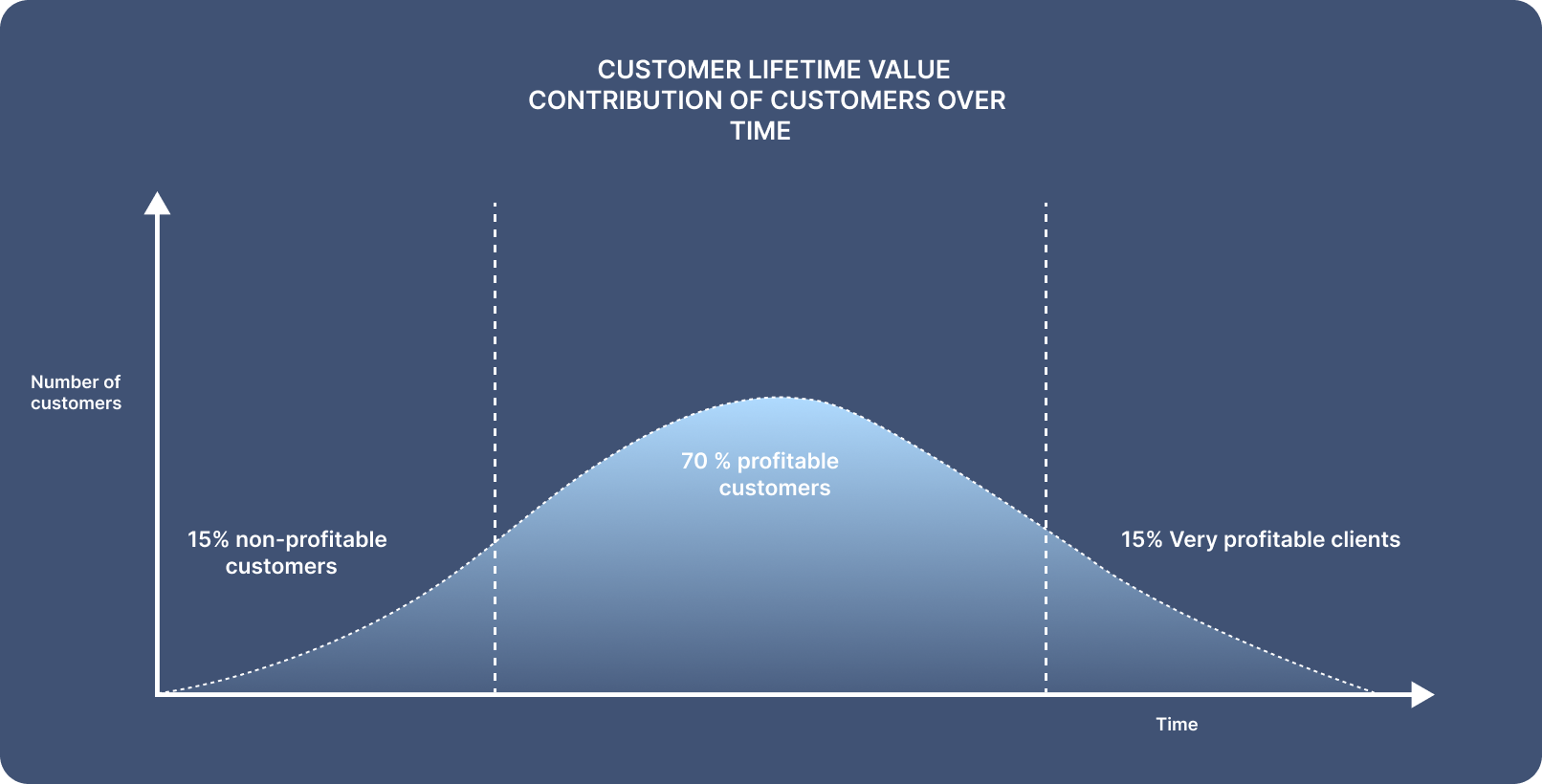
This metric aims to estimate the potential profit each client may provide for the company. Companies can use the CLV calculation to determine how much they can spend to gain each client.
Apply the following formula to calculate your customers’ lifetime value:
- First, calculate the customer value by multiplying customers’ average number of transactions by the average value of a transaction.
- Then, multiply the resulting customer value by the average customer lifespan.
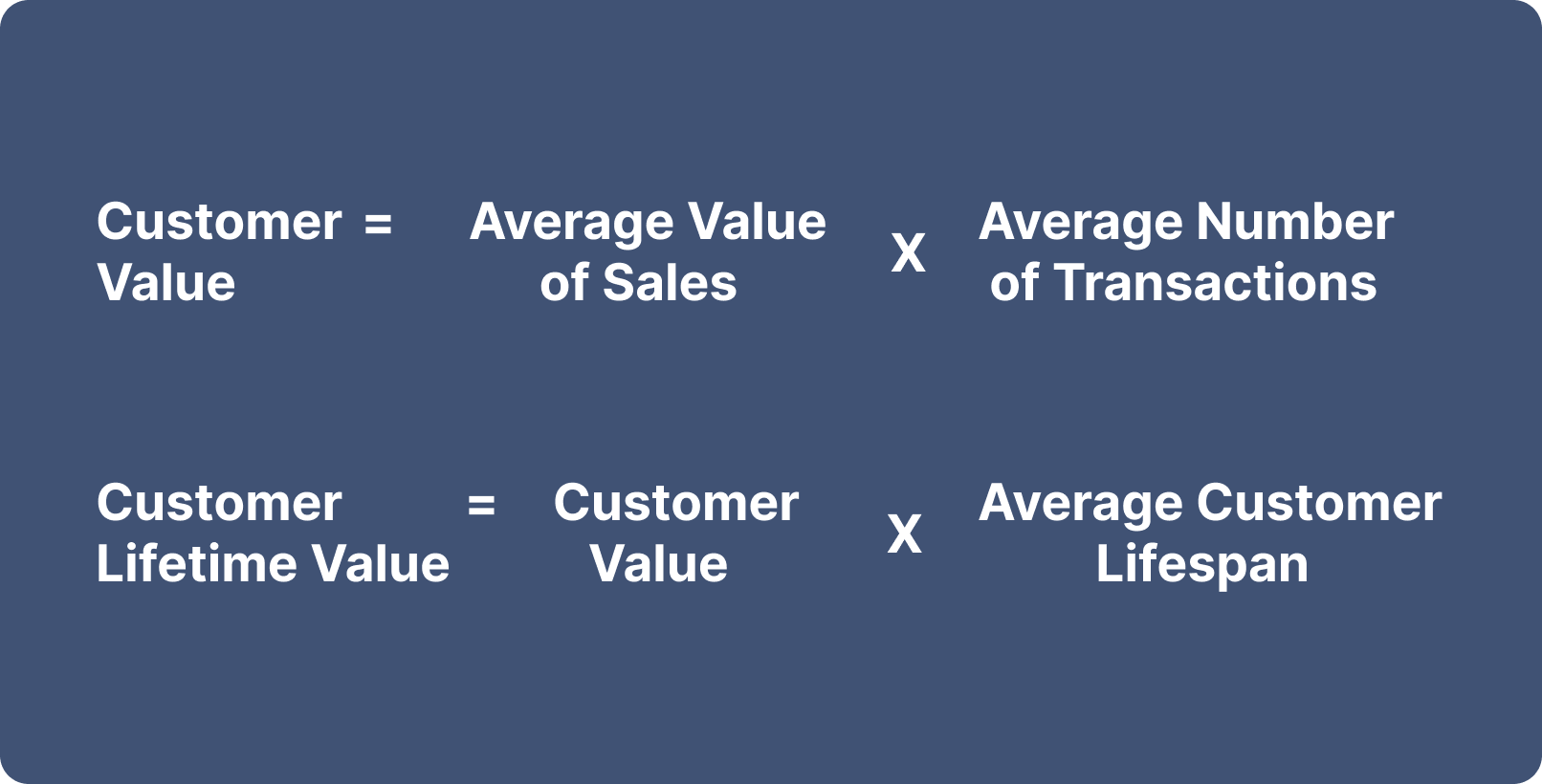
4. Repeat purchase rate
The frequency with which buyers make purchases of a specific product is known as the repeat purchase rate. A high frequency of repeat business is a strong indicator of consumer loyalty and people who believe in your brand.
To calculate the repeat purchase score, follow this formula:
Divide the total number of repeat customers by the total number of paying clients.

5. Customer loyalty index
A standardized technique for tracking client loyalty over time is the customer loyalty index (CLI). Even though it can be your top goal, client loyalty cannot be expressed in a single figure.
This is why CLI considers a variety of variables, including Net Promoter Score (NPS), upselling, and repeat business. This is done by way of a questionnaire that covers these three crucial areas:
- How likely are you to tell [people you know] about us?
- How likely are you to buy from us later?
- Are you likely to try our other products or services?
The average of their three replies determines a customer’s CLI.
It rates these responses on a scale of 1 to 6, with one denoting “Definitely Yes” and six denoting “Definitely No.”
6. Active engagement rate
A valuable indicator of client loyalty is the active engagement rate, which is comparable to the participation rate. The quantity of consumers actively participating in your loyalty program is called active engagement.
Active engagement rate calculation is as follows:
- Take the total number of customers in a given time period and divide it by the number of clients participating in the loyalty program.

7. Rate of engagement in social media
Social media engagement serves as a valuable tool for measuring customer loyalty metrics. It allows businesses to track customer interactions, preferences, and overall sentiment toward their brand. You can monitor consumer loyalty by monitoring your social media involvement levels.
Count the mentions, likes, shares, and comments you receive on social networking sites. Your clients are more likely to be loyal to your company if they are active on social media.
8. Customer attrition rate
It is critical to monitor client turnover in the same way as client retention. Customer churn is the number of clients that leave your company over time. A high customer churn rate (CCR) suggests that many of your clients will attend your firm.
Calculate the rate of customer attrition using the following formula:
- Divide the number of clients who left your company in a specific time period by the number of customers at the start of that period, then multiply that value by a hundred.

9. Upsell ratio
The upsell ratio is yet another excellent indicator for gauging client loyalty. This customer experience metric is the proportion of buyers who made several purchases over those who made just one purchase.
Cross-selling is the process of purchasing more items than were initially planned, whereas upselling refers to the behavior of choosing higher-value choices over lower-value ones.
To calculate the upsell ratio:
- Divide the number of customers purchasing additional services by the total number of all customers.

Ways to improve customer loyalty to your business
Here are some crucial pointers for enhancing your metrics:
Create loyalty programs
Instead of holding frequent sales events and discount promotions, you could create a customer loyalty metrics program that rewards customers for their repeat business to boost their overall income.
Doing this may establish a relationship with the consumer and provide them with reasons to place further orders.
Ask for feedback from customers
Repeatedly ask your customers for their opinions and suggestions (but not to the point of being annoying). This shows that you respect their point of view and are willing to improve based on their needs and preferences.
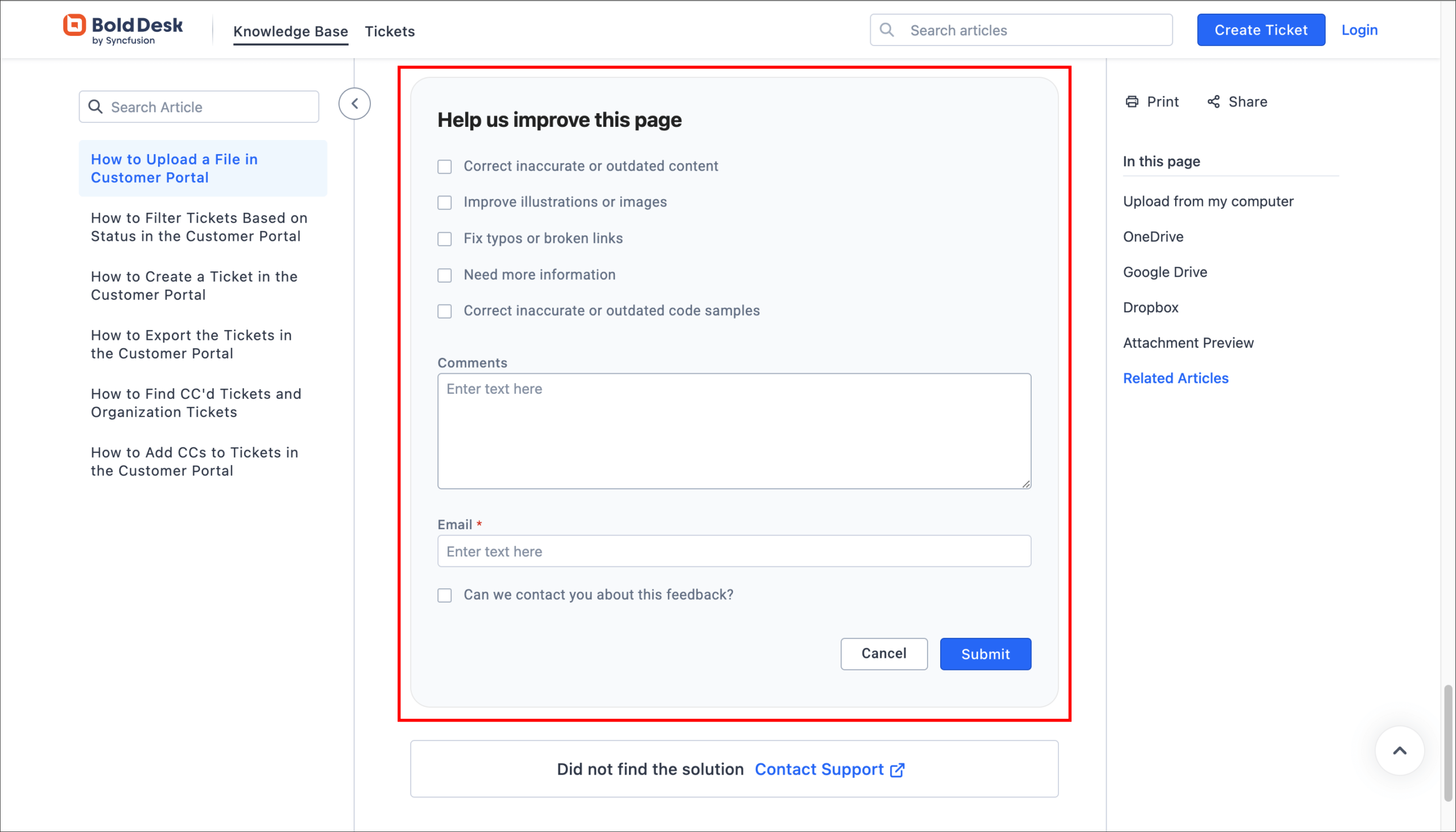
You can request feedback on your merchandise or the performance of your customer service staff.
This can assist you in gaining more sales from customers who see their suggestions come to fruition in your offerings.
Social media engagement
If you put time and effort into your social media interaction, your most devoted clients could assist you in reaching new heights. Your company’s success depends on building strong customer relationships. Thus, having active social pages is now required.
Using social media marketing and interactions, many new businesses are attempting to engage clients further, turning them into brand advocates.
The more you invest in client involvement; the more money you save from the free marketing they give you.
Take advantage of customer loyalty metrics to scale
You can better gauge your company’s development and trajectory if you calculate customer loyalty.
Tracking a mix of customer loyalty metrics will offer you a more in-depth understanding of your success in attempts to win over consumers’ loyalty.
Consider using a platform like BoldDesk® to improve your customer experience. Sign up for a free trial or book a live demo to see what it can do for your support team. If you have any questions, please contact our support team.
Related articles


















 Email Ticketing System
Email Ticketing System Shared Inbox Software
Shared Inbox Software Multi Brand Help Desk
Multi Brand Help Desk Internal Help Desk Software
Internal Help Desk Software Trouble Ticketing Software
Trouble Ticketing Software Mobile Help Desk
Mobile Help Desk 










